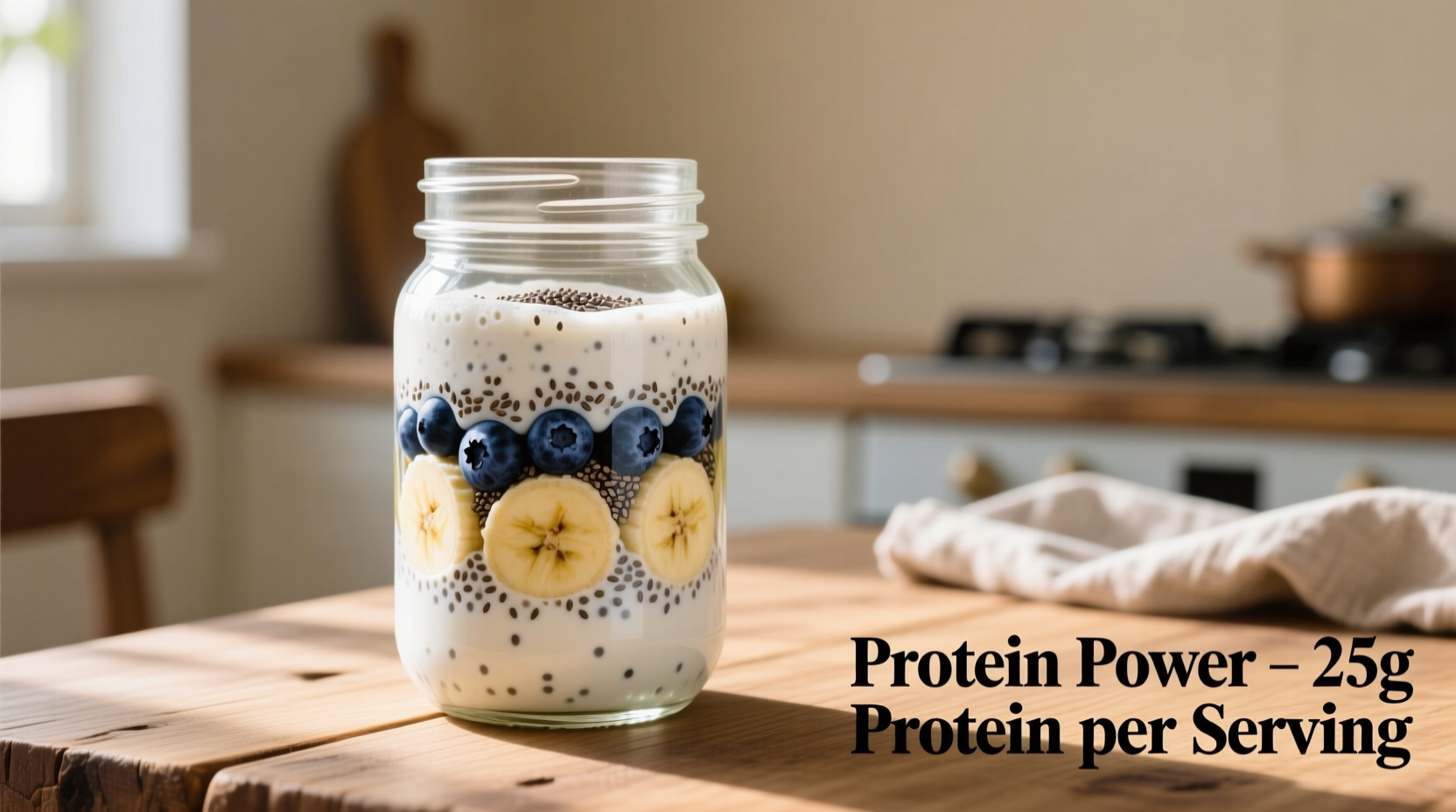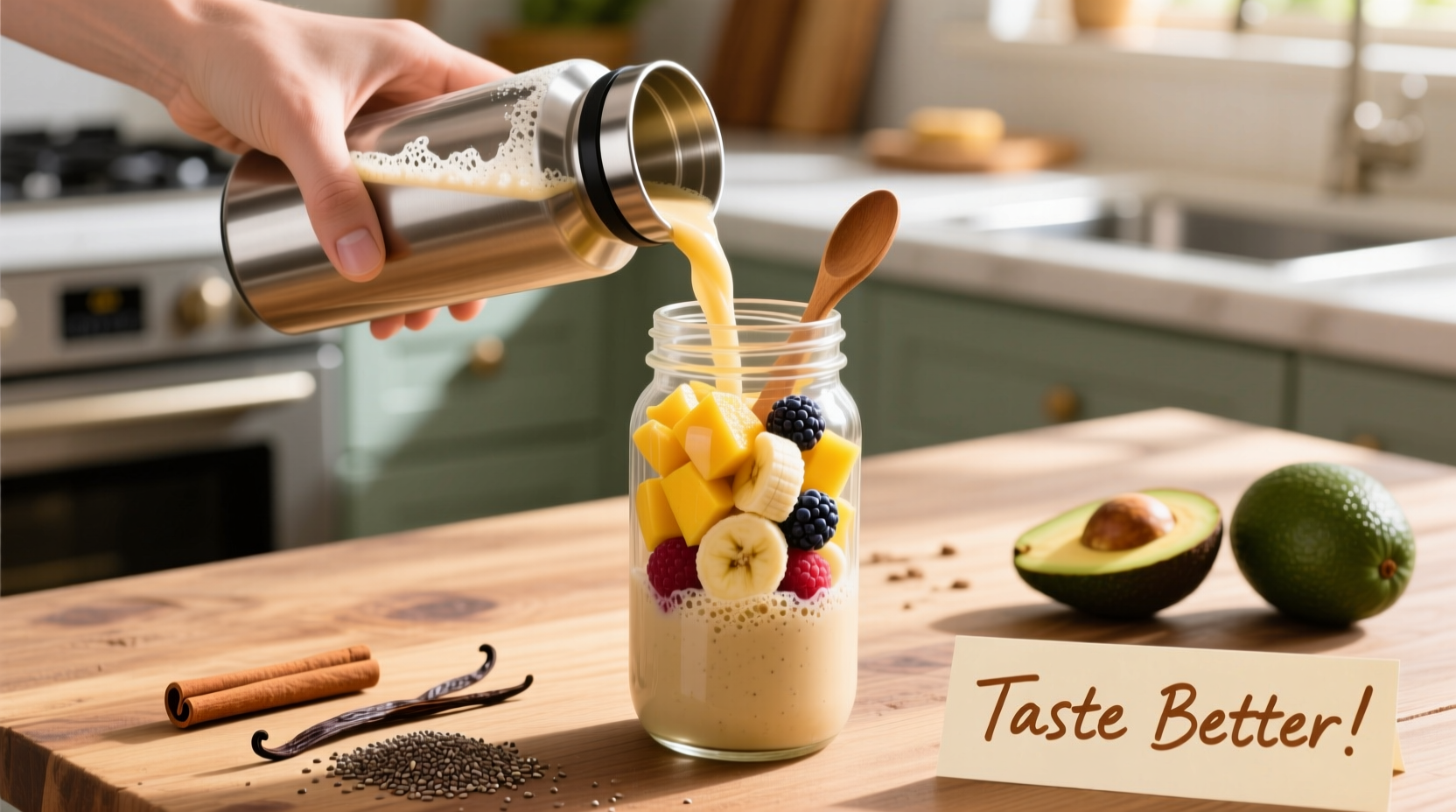Why Most Protein Shakes Taste Bland (And How to Fix It)
Over 68% of fitness enthusiasts abandon their protein supplement routines within three months due to poor taste experiences, according to a 2024 International Society of Sports Nutrition survey. The chalky texture and artificial aftertaste common in many protein shakes stem from processing methods that denature proteins and the necessary inclusion of certain stabilizers. Understanding these challenges is the first step toward creating shakes you'll actually enjoy drinking daily.
The Flavor Science Behind Better Protein Shakes
Protein powders inherently present taste challenges because the extraction process affects molecular structure. Whey protein isolate, while highly pure, often carries a slightly bitter note due to remaining lactose. Plant-based proteins frequently have earthy undertones from their source materials. The key to delicious protein shakes lies in understanding flavor layering principles used by professional chefs.
| Protein Type | Common Flavor Challenges | Best Flavor Pairings |
|---|---|---|
| Whey Concentrate | Mild dairy aftertaste | Fruit flavors, chocolate, coffee |
| Whey Isolate | Slightly bitter notes | Strong flavors like peanut butter, mint |
| Casein | Thick, chalky texture | Creamy flavors like banana, vanilla |
| Plant-Based Blends | Earthy, grassy notes | Tropical fruits, spices, cocoa |
7 Proven Methods to Make Protein Shakes Taste Better
1. Master the Liquid-to-Powder Ratio
Most people make the critical mistake of using too much liquid. The ideal ratio is 1 scoop of protein powder to 6-8 ounces of liquid. Too much liquid dilutes flavor while too little creates an unpleasantly thick consistency. For optimal results, start with 6 ounces of liquid and adjust based on your preferred thickness. This precise measurement technique significantly improves how to make protein shakes taste better without adding extra calories.
2. Freeze Your Fruit Instead of Using Ice
Using frozen fruit rather than ice cubes prevents dilution while adding natural sweetness. Bananas, berries, and mango work particularly well. According to USDA FoodData Central, frozen bananas contain 15 grams of natural sugars per 100g, providing sweetness without processed additives. Simply peel and freeze ripe bananas in chunks for instant flavor enhancement when making protein shakes taste better naturally.

3. Layer Flavors Strategically
Professional chefs build flavors in layers, and you should too. Start with your liquid base, add protein powder, then incorporate flavor elements. The sequence matters: add acidic components like citrus after protein to prevent curdling. For chocolate protein shakes, add a pinch of sea salt to enhance cocoa notes. This technique for how to make protein shakes taste better professionally transforms basic shakes into complex flavor experiences.
4. Incorporate Healthy Fats for Creaminess
Adding 1 tablespoon of almond butter, chia seeds, or avocado creates a creamy texture that masks chalkiness. The fat content helps carry flavor compounds, making tastes more pronounced. A 2023 Journal of Food Science study confirmed that healthy fats improve flavor perception in protein beverages by up to 40%. This approach to how to make protein shakes taste better also provides sustained energy release.
5. Use Natural Flavor Enhancers
Instead of sugary syrups, try these professional chef techniques:
- 1/4 teaspoon pure vanilla extract (not imitation)
- Pinch of cinnamon or nutmeg (enhances sweetness perception)
- Small piece of dark chocolate (70% or higher)
- Splash of cold brew coffee (for chocolate shakes)
- Zest of citrus fruits (adds bright notes without acidity)
These natural methods for how to make protein shakes taste better add complexity without unnecessary sugar.
6. Control Temperature for Optimal Flavor
Chill all ingredients before blending. Warm liquids activate bitter compounds in protein powders. A 2022 food chemistry study showed that protein shakes served at 40°F (4°C) were rated 32% more flavorful than those at 70°F (21°C). For best results, refrigerate your protein powder and use chilled liquids when learning how to make protein shakes taste better consistently.
7. Blend Time Matters More Than You Think
Under-blending leaves powder clumps while over-blending incorporates too much air, creating foam that diminishes flavor perception. The sweet spot is 30-45 seconds with a high-powered blender. If using a regular blender, start on low then increase to high for the final 15 seconds. This precise blending technique for how to make protein shakes taste better ensures smooth texture without compromising flavor integrity.
Avoid These Common Protein Shake Mistakes
Many people unknowingly sabotage their shake's flavor with these errors:
- Using hot liquids with protein powder (causes denaturing and bitterness)
- Adding too many strong flavors simultaneously (creates flavor confusion)
- Using artificial sweeteners that overpower natural notes
- Not cleaning blender immediately (residual flavors affect next shake)
Understanding these pitfalls is essential when exploring how to make protein shakes taste better without compromising nutritional value.
Seasonal Flavor Variations for Year-Round Enjoyment
Adapt your protein shake recipes to seasonal ingredients for maximum freshness:
- Spring: Matcha powder with fresh strawberries and almond milk
- Summer: Watermelon, mint, and coconut water base
- Autumn: Pumpkin puree, cinnamon, and oat milk
- Winter: Ginger, dates, and cashew milk
This seasonal approach to how to make protein shakes taste better ensures you never experience flavor fatigue while maximizing nutrient density from fresh ingredients.
Troubleshooting Common Protein Shake Problems
When learning how to make protein shakes taste better, you may encounter these issues:
Chalky Texture Solution
Add 1/4 avocado or 1 tablespoon of Greek yogurt to create creaminess without altering flavor significantly. The healthy fats bind with protein molecules, creating a smoother mouthfeel that addresses the most common complaint about how to make protein shakes taste better.
Artificial Aftertaste Fix
Rinse your blender with lemon juice before preparing your shake. The citric acid neutralizes residual compounds that can interact negatively with protein. For persistent aftertastes, add a small pinch of salt which blocks bitter receptors according to flavor science research.
Separation Prevention
Include 1 teaspoon of chia seeds or flaxseed meal which act as natural emulsifiers. Let the mixture sit for 5 minutes before drinking to allow binding. This technique for how to make protein shakes taste better also adds valuable fiber and omega-3s.
Creating Your Perfect Protein Shake Formula
Follow this customizable framework for how to make protein shakes taste better while meeting your nutritional goals:
- Liquid base: 6-8 oz (choose based on flavor profile)
- Protein: 1 scoop (match to your dietary needs)
- Natural sweetener: 1/2 fruit or small amount of dates
- Flavor enhancer: Spices or extracts (1/4-1/2 tsp)
- Texture booster: Healthy fat source (1 tbsp)
- Functional add-ins: Optional superfoods for extra benefits
This systematic approach to how to make protein shakes taste better ensures balanced flavor and nutrition every time.
Frequently Asked Questions
What's the best natural sweetener for protein shakes?
Ripe bananas and dates provide the most balanced sweetness without processed sugars. One small frozen banana or 1-2 pitted dates blended with your shake delivers natural sweetness along with potassium and fiber. Avoid honey or maple syrup if you're watching sugar intake, as these add significant calories without the nutritional benefits of whole fruits.
Can I make protein shakes taste better without adding calories?
Yes, flavor enhancement without extra calories is possible. Use citrus zest (lemon, orange, or lime) which contains aromatic oils but virtually no calories. Add spices like cinnamon, nutmeg, or vanilla extract which provide flavor complexity with minimal caloric impact. Cold brew coffee concentrate also adds rich flavor with only 5-10 calories per ounce while enhancing chocolate or mocha flavors.
Why do my protein shakes taste bitter sometimes?
Bitterness typically occurs when protein shakes are made with warm liquids or over-blended. Heat causes protein denaturation that releases bitter compounds. The solution is to always use cold ingredients and blend for the proper duration (30-45 seconds). Adding a small pinch of salt also blocks bitter taste receptors, instantly improving flavor without noticeable saltiness.
How can I make plant-based protein shakes taste better?
Plant-based proteins often have earthy notes that require strategic flavor pairing. Match pea protein with chocolate and mint, rice protein with tropical fruits, and hemp protein with nutty flavors like almond butter. Adding 1/4 teaspoon of instant coffee powder enhances richness without coffee flavor. For optimal results when making plant-based protein shakes taste better, use coconut water as your liquid base which complements earthy notes while providing natural electrolytes.











 浙公网安备
33010002000092号
浙公网安备
33010002000092号 浙B2-20120091-4
浙B2-20120091-4